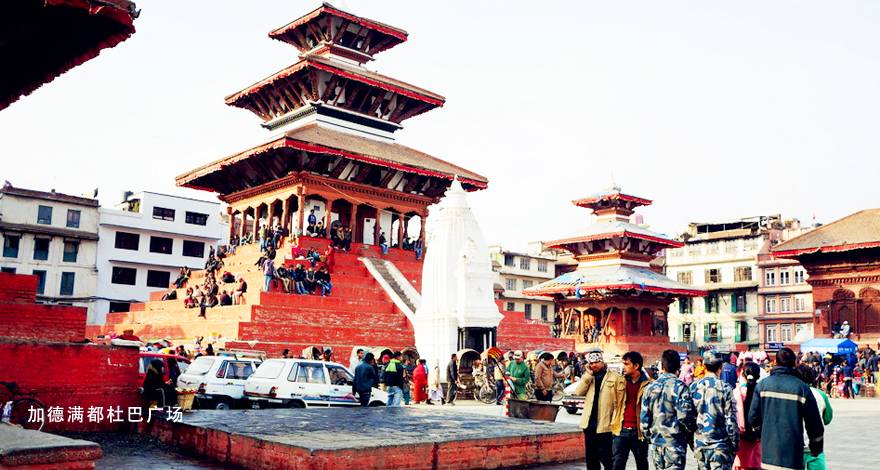(单词翻译:单击)
情景对话
Adam: Alright, hi! I'm Adam, and I'm with Jin today, and we're talking about your home country, Nepal.
亚当:好,嗨!我是亚当,今天我来和金聊聊,我们要谈谈你的祖国尼泊尔。
Jin: Yes, that's right.
金:好的。
Adam: Very cool. I know that the Himalayas, and even Mt. Everest is in Nepal, which is amazing. What else can you tell us about the geography of your country?
亚当:太酷了。我知道喜马拉雅山还有珠穆朗玛峰都在尼泊尔,这太不可思议了。请你详细介绍一下尼泊尔的地理环境。
Jin: Yeah, well actually, when people think about Nepal, they just talk about the mountains, but then there are actually three regions. There is the mountain region, and then there is another hilly region, and then Terai region, so then in Terai region, the earth, like the surface is really flat, and that's where people grow crops. That's where like we get all the grains from, and then there is the hilly region, which is in the middle part Nepal, and that's where I am from, the capital, Kathmandu, and it's like, the temperature is really good there because it's not really hot, not really cold. Ah, in terai region it's really hot, but in the hilly region, like it's perfect, and then there's the Himalayas, where it's super cold, and that's where there are like a lot of mountains, which divides us from China.
金:好,当提到尼泊尔的时候,人们都会想到高山,不过其实尼泊尔有三个地区。分别是山区、丘陵区和南部塔米区,南部塔米区的土地很平坦,所以那里是庄稼种植区。我们所吃的粮食都产自那里,丘陵区位于尼泊尔中部地区,首都加德满都就位于那里,那也是我的家乡,那里的温度很适宜,不热也不冷。南部塔米区非常热,不过丘陵区的气温很完美,而喜马拉雅山区特别冷,那里有许多高山,是尼泊尔和中国的边界。
Adam: So in the south it's kind of the farming area?
亚当:那尼泊尔南部是耕作区?
Jin: Yeah, in the south, yeah, like everyone's ... the main job is farming.
金:对,南部地区民众的主要工作是务农。
Adam: That's next to India?
亚当:那里和印度接壤?
Jin: India, yeah.
金:印度,对。
Adam: What kind of farming do they do in Nepal in the south?
亚当:尼泊尔南部一般都种植什么?
Jin: They usually grow rice there, and since the land is so fertile, there a like a lot of vegetables, rice, and like a lot of fruits. Everything that grows in hot temperatures.
金:通常是水稻,由于那里土地肥沃,所以他们可以种植许多种蔬菜、水稻和水果。可以种植一切适宜炎热气候的东西。
Adam: Oh, so you have a lot of fruits in Nepal?
亚当:哦,尼泊尔有很多水果吗?
Jin: Yeah, we do. We have a lot of fruits, like of different kinds, like I told you, since it's cold, hot and moderate as well, so like we get fruits from all different places and it's amazing.
金:对,没错。我们有很多不同种的水果,我刚才说过,因为尼泊尔有寒冷、炎热和温和三种气候,所以各地都能种植水果,这非常棒。
Adam: Yeah, that's really cool. I didn't know Nepal had so many different climates in one country.
亚当:对,那太酷了。我不知道尼泊尔这个国家有这么多种不同的气候。
Jin: Yeah, for a small country, it's a lot, I know.
金:嗯,对一个小国来说,尼泊尔的气候种类的确很多。
Adam: Well, thank you so much for telling us about Nepal today.
亚当:嗯,非常谢谢你今天给我们介绍尼泊尔。
Jin: You're welcome. You can ask me anytime.
金:不客气。你随时都能问我。

译文属可可原创,仅供学习交流使用,未经许可请勿转载
重点讲解
重点讲解:
1. think about 想;考虑;
例句:When you think about it, he's probably right.
现在想想看,他很可能是对的。
2. kind of 稍微;有几分;有点儿;
例句:It kind of gives us an idea of what's happening.
这让我们大概了解了正在发生的事情。
3. be next to 紧靠…旁边;在…近旁;贴近;
例句:The two factories are next to each other.
那两家工厂紧挨着。
4. as well 也;还;
例句:We should stick to the principles and be flexible as well.
既要有原则性,也要有灵活性。


